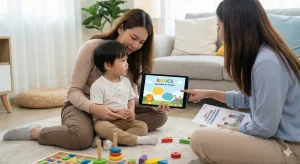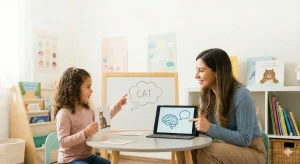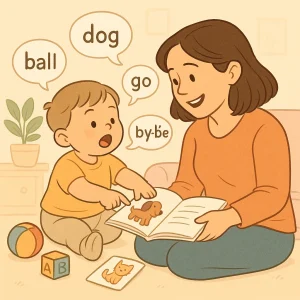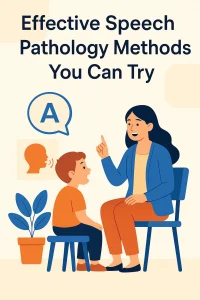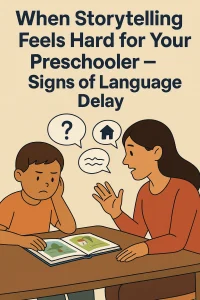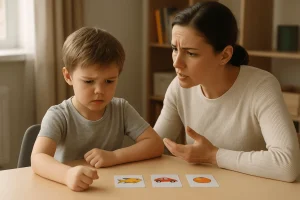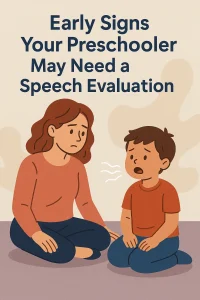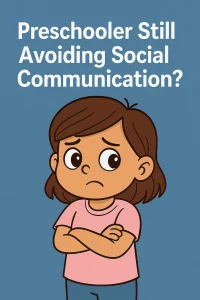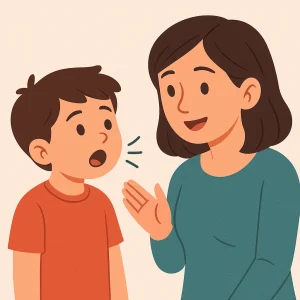Creative Movement Exercises for Better Speech Development
Last Updated: August 27, 2024
Speech Development is a vital part of a child’s overall growth, playing a crucial role in their ability to communicate effectively and interact with the world around them. Early speech and language skills are foundational for later academic success and social relationships. As a parent or caregiver, finding effective and enjoyable ways to support your child’s speech development can make a significant difference.
One highly effective method is incorporating creative movement exercises into your child’s routine. These activities not only make learning fun but also engage multiple senses, stimulate brain connections, and encourage active participation. Movement and speech are closely connected, and integrating physical activities can greatly enhance your child’s ability to develop language skills.
The Connection Between Movement and Speech Development
Motor skills and speech development are deeply interconnected, forming a foundation that supports a child’s ability to communicate effectively. Physical movement is not just about building muscle strength and coordination; it also plays a critical role in brain development and the acquisition of language skills.
When children engage in physical activities, their brains form new neural connections. These connections are vital for cognitive processes, including speech and language development. Research has shown that movements, especially those that require coordination and balance, stimulate areas of the brain associated with language processing.
One study from the American Academy of Pediatrics highlights that play, which often involves movement, is essential for children’s development. It fosters not only physical growth but also cognitive, emotional, and social development. Engaging in play that incorporates movement helps children learn new words, understand complex sentences, and improve their overall communication skills.
Furthermore, activities that combine movement with language—such as singing action songs, playing games like “Simon Says,” or acting out stories—can significantly boost a child’s ability to learn and use new vocabulary. These activities make learning interactive and fun, which increases a child’s engagement and motivation to participate.
Movement Activities by Age Group
| Age Group | Activities | Benefits |
|---|---|---|
| Babies (0-1) | – Eye-Tracking – Building Blocks – Bubbles – Early communication – Peek-a-Boo | – Visual attention – Hand-eye coordination |
| Toddlers (1-3) | – Run and Chase – Imitation Games – Ball Play – Playground Fun – Jumping and Balancing | – Vocabulary – Listening skills – Social interactions – Coordination |
| Preschoolers (3-5) | – Color-Corner Game – Traffic Light Game – Hide and Seek – Line Marking Games – Role Play | – Advanced language skills – Cognitive flexibility – Imaginative play |
Creative Movement Exercises for Babies (0-1 Year)
Introducing movement exercises to babies not only enhances their motor skills but also lays the foundation for speech and language development. Here are some simple yet effective activities you can try with your baby to support their growth.
Eye-Tracking Activity
How to Perform: Sit facing your baby and hold a colorful toy or object about 8-12 inches away from their face. Slowly move the toy side to side, up and down, and in circular motions while encouraging your baby to follow it with their eyes.
Benefits: Eye-tracking activities help develop your baby’s visual attention and coordination. This exercise also promotes joint attention, which is crucial for early communication. As your baby follows the object, they are learning to focus and track movements, which are foundational skills for later speech development.
Building Blocks
How to Perform: Provide your baby with large, soft blocks that they can safely grasp and manipulate. Show them how to stack the blocks and then knock them down. Encourage them to try stacking on their own as they get older.
Benefits: Playing with building blocks enhances fine motor skills and hand-eye coordination. These activities also introduce concepts of cause and effect, spatial relationships, and problem-solving. Additionally, the interaction involved in building and knocking down blocks provides opportunities for language-rich interactions, where you can describe actions and objects, helping your baby learn new words.
Bubbles and Peek-a-Boo
How to Perform (Bubbles): Blow bubbles and encourage your baby to watch and reach for them. You can pop the bubbles together, naming each action as you do so.
How to Perform (Peek-a-Boo): Hide your face behind your hands or a cloth, then reveal it while saying “Peek-a-boo!” You can vary this by hiding behind furniture or using a blanket.
Benefits: Both activities are fantastic for engaging your baby’s attention and promoting social interaction. Watching and reaching for bubbles helps improve visual tracking and hand-eye coordination. Peek-a-boo, on the other hand, helps develop object permanence and turn-taking skills. Both games are great for introducing new words and phrases in a fun, interactive way.
Floor time and Rhymes
How to Perform (Floor time): Spend time on the floor with your baby, encouraging them to explore their environment through rolling, crawling, and reaching for toys. Engage with them by mirroring their actions and making eye contact.
How to Perform (Rhymes): Sing simple nursery rhymes and songs to your baby, using hand gestures and facial expressions to illustrate the words.
Benefits: Floor time allows for unstructured play, which is essential for motor and cognitive development. It helps build a positive relationship between you and your baby, fostering a secure attachment that is crucial for emotional and social development. Singing rhymes introduces rhythm and melody, which are key components of language. The repetition and musicality help babies recognize and remember words, enhancing their auditory processing skills.
Also read: Speech and Language Milestones: 0 to 12 Months
Creative Movement Exercises for Toddlers (1-3 Years)
As toddlers grow, their increased mobility and curiosity make it the perfect time to introduce more dynamic and engaging movement activities that can also boost their speech development. Here are some fun and effective exercises you can try with your toddler.
Run and Chase Games
How to Perform: Simple games like tag or hide and seek are excellent for toddlers. One person is “it” and chases the others until they tag someone, who then becomes “it.” For hide and seek, one person hides while the other seeks.
Benefits: These games encourage toddlers to listen, follow directions, and understand turn-taking—all of which are important for speech development. They also help toddlers learn new vocabulary related to the game and improve their social interaction skills.
Read more: Does Speech Therapy Work for Toddlers?
Imitation Games
How to Perform: Engage your toddler in activities where they copy your actions. This can include walking like different animals, making funny faces, or mimicking simple actions like clapping hands or waving.
Benefits: Imitation games are great for developing both motor and speech skills. By copying actions and sounds, toddlers learn new words and phrases, improve their pronunciation, and develop better listening skills. These activities also enhance their ability to follow instructions and understand the concept of mimicking, which is foundational for language learning.
Ball Play
How to Perform: Introduce various ball games such as rolling, kicking, and throwing a ball. You can create targets for your toddler to aim at or play catch with them.
Benefits: Playing with a ball improves coordination and fine motor skills. It also provides opportunities for toddlers to learn new words (like “throw,” “catch,” “roll”) and practice verbal communication as they interact with you or other children during the game. Describing actions and giving instructions during ball play can enhance their vocabulary and sentence-building skills.
Playground Activities
How to Perform: Take your toddler to a playground with slides, swings, merry-go-rounds, and see-saws. Encourage them to explore and use the equipment under your supervision.
Benefits: Playground activities are fantastic for developing gross motor skills and social interaction. They help toddlers learn new words related to movement and play (“slide,” “swing,” “climb”). These activities also provide a natural setting for conversations and interactions with other children, which can enhance their social and language skills.
Jumping and Balancing Activities
How to Perform: Set up simple jumping games like hopscotch, or have your toddler jump from one spot to another. You can also create balancing activities using a straight line on the ground or a low beam for them to walk on.
Benefits: Jumping and balancing exercises improve coordination, strength, and spatial awareness. They also encourage toddlers to follow directions and use language to describe their actions and movements. These activities can help with the development of prepositional phrases (like “over,” “under,” “on top of”) and enhance their overall communication abilities.
Read more: Speech and Language Milestones – 1 to 2 years
Creative Movement Exercises for Preschoolers (3-5 Years)
Preschoolers are full of energy and curiosity, making this an ideal time to introduce movement activities that can also enhance their speech and language skills. Here are some engaging activities tailored for children aged 3 to 5.
Color-Corner Game
How to Play: Designate different corners of a room or play area with different colors. When you call out a color, the child must run to the corresponding corner. You can add variations by calling out actions along with the colors, such as “Blue corner, hop!” or “Red corner, crawl!”
Benefits: The Color-Corner Game helps preschoolers improve their listening skills, follow directions, and learn color names. It also encourages physical movement and coordination. By adding actions, children expand their vocabulary and practice following multi-step instructions, which are crucial for language development.
Traffic Light Game
How to Play: Assign different actions to the colors of a traffic light. For example, “Green” means go (run), “Yellow” means slow down (walk slowly), and “Red” means stop. Call out the colors randomly and have the children perform the corresponding actions.
Benefits: This game is excellent for teaching children to listen carefully and respond to verbal cues. It helps them understand the concepts of speed and movement while learning new words and phrases. The Traffic Light Game also reinforces their ability to follow instructions and enhances their cognitive flexibility.
Hide and Seek
How to Play: One child hides while the others count to a predetermined number and then seek the hidden child. The game can be played indoors or outdoors, making it versatile and adaptable to various settings.
Benefits: Hide and Seek is great for developing problem-solving skills and social interaction. It encourages children to use language to give and follow clues, describe hiding spots, and communicate during the search. This game also helps children understand concepts like “inside,” “behind,” and “under,” which are important for language development.
Movement Activities with Line Markings
How to Play: Create lines or shapes on the ground using chalk or tape. Activities can include hopscotch, walking on a balance beam (line), or jumping from shape to shape when you call out the names.
Benefits: These activities improve balance, coordination, and motor planning. They also provide opportunities for preschoolers to follow instructions and learn spatial vocabulary (e.g., “jump on the circle,” “walk on the line”). Playing games like hopscotch can help children practice counting and recognizing numbers, further supporting their cognitive development.
Role Play and Story Enactment
How to Play: Encourage children to engage in role-playing games, such as pretending to be doctors, teachers, or chefs. Provide props and costumes to enhance the experience. You can also read a story and have the children act out the characters and events.
Benefits: Role play and story enactment are powerful tools for language development. They stimulate imagination and creativity, helping children to use new vocabulary in context. These activities also promote narrative skills, as children learn to sequence events and describe actions. Role play encourages social interaction and helps children practice conversational skills, such as taking turns and responding to others.
Integrating Movement and Language Development in Daily Routines
Integrating movement and language development into your daily routines doesn’t have to be complicated or time-consuming. Here are some practical tips for parents and caregivers to make these activities a seamless part of everyday life, ensuring that your child is constantly learning and developing their speech skills.
Tips for Incorporating Movement Activities into Daily Routines
- Morning Routine: Start the day with a simple stretching exercise that includes naming body parts and actions. For example, “Touch your toes,” “Reach for the sky,” and “Wiggle your fingers.” This not only wakes up their bodies but also reinforces vocabulary related to body parts and actions.
- Meal Preparation: Involve your child in meal preparation by giving them simple tasks like stirring, washing vegetables, or setting the table. Use this time to talk about the names of foods, colors, and textures. You can ask questions like, “What color is this carrot?” or “Can you stir the soup slowly?”
- Story Time with Movement: Combine reading with movement by acting out parts of the story. For example, if a character is jumping, have your child jump too. This makes reading more interactive and helps children understand and remember new words and concepts.
- Playtime: Encourage active play that includes language elements. Games like Simon Says, charades, or obstacle courses can be easily set up in your living room or backyard. Give clear, descriptive instructions to help your child follow along and learn new words.
- Bath Time: Turn bath time into a language-rich experience by naming bath toys, singing songs, and playing simple games like “sink or float.” This helps expand their vocabulary and makes learning fun and relaxing.
- Bedtime Routine: End the day with gentle yoga or stretching exercises while talking about the activities of the day. This can include questions like, “What was your favorite part of today?” or “Can you show me how you jumped at the playground?”
Simple Modifications for Everyday Tasks
| Task | Modification | Speech Development Benefit |
|---|---|---|
| Morning Routine | Stretch and name body parts – Body awareness | – Vocabulary |
| Meal Prep | Talk about food and colors – Interaction | – Descriptive language |
| Story Time | Act out parts of the story – Vocabulary | – Comprehension |
| Playtime | Use interactive games like Simon Says – Learning new words | – Following instructions |
| Bath Time | Sing songs, talk about bath toys – Relaxation | – Vocabulary |
| Bedtime Routine | Reflect on the day, gentle yoga – Calming routine | – Reflective language |
Simple Modifications to Everyday Tasks
- Walking and Talking: During walks, talk about what you see around you. Point out trees, cars, birds, and other objects, and describe them. Ask your child questions like, “What do you hear?” or “Can you find something blue?”
- Cleaning Up: Turn cleaning up into a game by singing clean-up songs or setting a timer and racing to finish tidying up. Use descriptive language like, “Let’s put the red blocks in this box,” or “Can you find all the blue cars?”
- Shopping Trips: While shopping, involve your child by asking them to find items on the shelves. Describe the items you are buying and talk about their uses. For example, “We need to find apples. What color are apples?”
Encouraging Consistency and Creativity
Consistency is key in integrating movement and language activities into daily routines. Here are some tips to help you stay consistent and creative:
- Schedule Regular Playtimes: Set aside specific times each day for movement and language activities. Consistent routines help children know what to expect and look forward to these activities.
- Be Creative and Flexible: Use everyday objects and situations as opportunities for learning. A cardboard box can become a spaceship, or a walk in the park can turn into a treasure hunt. Adapt activities to fit your child’s interests and abilities.
- Encourage Participation: Invite your child to suggest games and activities. This not only keeps them engaged but also gives them a sense of ownership and excitement about learning.
- Celebrate Achievements: Praise your child for their efforts and progress. Positive reinforcement encourages them to keep participating and enjoying the activities.
Additional Tips for Parents and Caregivers
Creating a supportive and engaging environment for speech development is crucial for your child’s growth. Here are some additional tips to help you foster an environment that encourages speech and language development effectively.
Create a Supportive and Engaging Environment
- Make Communication a Priority: Ensure that your home environment is rich in language. Talk to your child frequently, describing what you’re doing, what they’re doing, and what’s happening around you. Engage in conversations during daily activities like meals, playtime, and bedtime routines.
- Use Positive Reinforcement: Praise your child’s efforts and progress in speech development. Positive reinforcement encourages them to keep trying and boosts their confidence. Simple praises like “Great job!” or “You said that word perfectly!” can make a big difference.
- Be Patient: Understand that every child develops at their own pace. Be patient and give your child the time they need to express themselves. Avoid rushing them or finishing their sentences, as this can cause frustration and hinder their progress.
- Encourage Social Interaction: Facilitate playdates and group activities where your child can interact with peers. Social interactions are essential for practicing conversation skills, learning new words, and understanding social cues.
- Create a Language-Rich Environment: Surround your child with books, songs, and games that promote language development. Read together daily, sing songs, and play games that involve talking and listening. The more exposure your child has to language, the more opportunities they have to learn.
Know more: What is the Relation between Communication, Speech and Language? | Speech and Language Therapy
Resources for Further Reading and Support
For more information and resources on speech development, consider exploring the following:
- Wellness Hub’s Articles and Guides: Visit Wellness Hub’s website for comprehensive articles and guides on speech and language development. Our resources provide valuable insights and practical tips to support your child’s growth.
- Professional Support: If you have concerns about your child’s speech development, don’t hesitate to seek professional help. Speech-language pathologists can provide tailored strategies and support to address specific needs.
Conclusion
In this article, we’ve explored various creative movement exercises that can significantly enhance speech development in children. For babies, activities like eye-tracking, building blocks, bubbles, peek-a-boo, floor time, and rhymes help improve visual attention, hand-eye coordination, and early communication skills. For toddlers, games such as run and chase, imitation, ball play, playground activities, and jumping and balancing exercises boost listening skills, vocabulary, social interactions, and coordination. Preschoolers benefit from color-corner games, traffic light games, hide and seek, movement activities with line markings, and role play, which foster advanced language skills, cognitive flexibility, and imaginative play.
By including these fun activities in your daily routine, you can help your child learn and grow continuously. These exercises make learning enjoyable and support essential speech and language skills. We encourage you to try these activities and share your experiences with others. For more tips and resources, visit our website Wellness Hub . Thank you for reading, and we hope you found this article helpful. Every small step can make a big difference in your child’s speech and language journey.
Frequently Asked Questions:
1. What are creative movement exercises for speech development?
Creative movement exercises are activities that combine physical movement with language learning. These exercises, such as playing games, dancing, or acting out stories, help children develop their speech and language skills in a fun and interactive way.
2. How do movement activities improve speech development?
Movement activities improve speech development by engaging multiple senses and stimulating brain connections. They help children learn new words, practice pronunciation, and improve their listening skills through interactive play.
3. What are some good movement exercises for babies to support speech development?
For babies, activities like eye-tracking, building blocks, bubbles, peek-a-boo, floor time, and singing rhymes are excellent. These exercises enhance visual attention, hand-eye coordination, and early communication skills.
4. What types of games help toddlers with speech development?
Toddlers benefit from run and chase games, imitation games, ball play, playground activities, and jumping and balancing exercises. These games help improve vocabulary, listening skills, social interactions, and coordination.
5. How can preschoolers benefit from movement activities?
Preschoolers can improve their speech and language skills through color-corner games, traffic light games, hide and seek, movement activities with line markings, and role play. These activities foster cognitive flexibility, advanced language skills, and imaginative play.
6. Can everyday tasks be modified to include speech development exercises?
Yes, everyday tasks like meal preparation, walking, cleaning up, and shopping can be modified to include speech development exercises. Talking about what you’re doing, asking questions, and involving your child in these tasks can enhance their language skills.
7. How often should I do these movement exercises with my child?
Consistency is key. Aim to incorporate these movement exercises into your daily routine. Regular, short sessions are more effective than occasional long sessions.
8. What should I do if I have concerns about my child’s speech development?
If you have concerns about your child’s speech development, consider seeking professional help from a speech-language pathologist. They can provide tailored strategies and support to address specific needs.
9. How can I create a supportive environment for my child’s speech development?
Create a language-rich environment by talking to your child frequently, using positive reinforcement, being patient, encouraging social interaction, and surrounding them with books, songs, and games that promote language development.
10. Where can I find more resources on speech development?
For more tips and resources on supporting speech and language development, visit the Wellness Hub website. Our articles and guides provide valuable insights and practical advice to help your child thrive.
About the Author:
Anuradha Karanam
Speech-language pathologist (7+ years of experience)
Anuradha Karanam is a skilled speech-language pathologist with over 6 years of experience. Fluent in Tamil, Telugu, Hindi, and English, she specializes in parent counseling, speech sound disorders, fluency assessment, and speech-language evaluations. Anuradha excels at working with children with developmental disorders, offering creative and effective therapy programs. Currently, at Wellness Hub, she holds a BASLP degree and is registered with the RCI (CRR No A85500). Her patience, ambition, and dedication make her a trusted expert in her field.
Book your Free Consultation Today
Parent/Caregiver Info:
Client’s Details:
* Error Message
